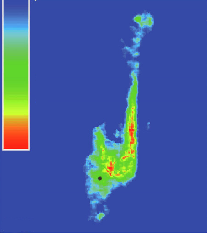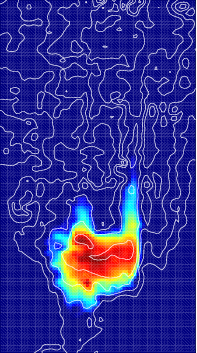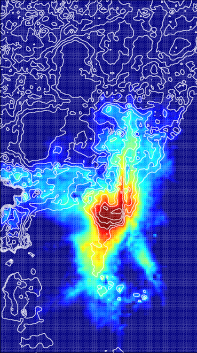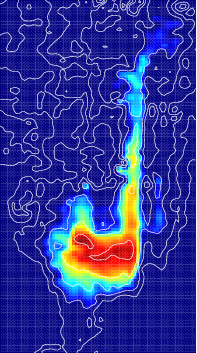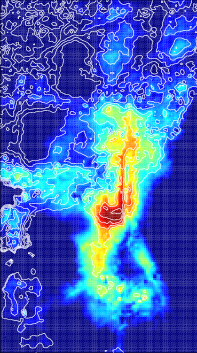|
Sleipner Injection: Matching Observed Plume Migration
The example shows how VE simulation models from MRST-co2lab was used to perform a sensitivity study and adjust the model parameters of a Sleipner benchmark model so that it better matched observed plume outlines.
Simulations of CO2 in the top layer of the Utsira formation using the original data (leftmost plots) and modified data (rightmost plots). When simulating only the first 7-year period, we have refined the grid by a factor two in each direction.
|
|||||||

